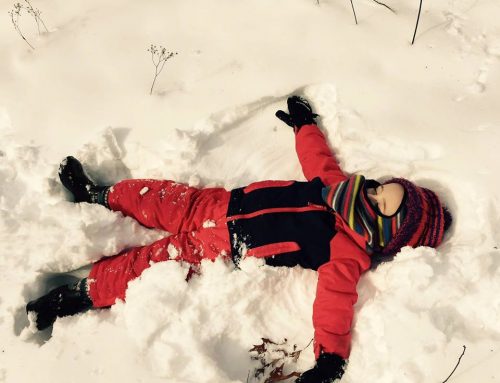It’s that time of year again, when friends and family return from their vacations filled with stories about summer adventures. One morning last week a child who is joining us for their second year came in to say hello and we got to chatting about their summer break. When I inquired what they did over her summer break she told me she went to a program at an out-of-state camp.
“Wow, that’s supposed to be really fun!” I exclaimed.
“It wasn’t any fun” she replied.
“Really? Why? What did you do?”
“We just ate food and sat in the gazebo.”
“Well what were you hoping it would be like?”
“I was hoping it would be like school!”
Really there isn’t any greater compliment for a school or a teacher as that! We talked about what it is exactly that she likes about school. We discovered it is the freedom to make her own choices and have long stretches of uninterrupted play time. A recent blog in the Washington Post created some buzz when it connected the increase in sensory issues in children to the lack of play time available in the classroom.
“The greatest sign of success for a teacher… is to be able to say, ‘The children are now working as if I did not exist.”
Maria Montessori
We know play is critical to children’s development and we know nature play is the most sensory developing form of play, but for the most part we think of play as something children do all by themselves. As parents and educators we ask ourselves, what is our role? How can a teacher facilitate, encourage and enhance a child’s natural ability to learn? What is it that leads a child to feel that her school is a better place for her to be than a ‘fun’ camp? And what if, by necessity, a child’s school is not the kind where they can be immersed in nature? What can a parent do then?
A recent book by Scott Sampson, How to Raise a Wild Child highlighted the importance of ‘nature mentoring’ to the development of the child. A nature mentor can be a parent, a teacher or anyone who helps guide a child towards a love of nature and offers opportunities for physical, cognitive and social development. A nature mentor doesn’t need to know the scientific names of every plant and animal. As a matter of fact in many cases, even if they know them, they should not rattle them off to children as they pass on a hike. A nature mentor helps develop a child’s potential by allowing them to find the answers on their own.
“Hands-on experience at the critical time, not systematic knowledge, is what counts in the making of a naturalist. Better to be an untutored savage for a while, not to know the names or anatomical details. Better to spend long stretches of time just searching and dreaming.”
E.O. Wilson
Sampson’s book highlights five things that a nature mentor needs to do to be effective. All of our educators including our early childhood specialists are experts not only in traditional naturalist knowledge but also at being nature mentors. They encourage, support and patiently allow children to develop naturally with nature. Parents can support their child’s development by applying the same principles of nature mentoring with their children on a daily basis by just going outside and exploring.
1. Demonstrate a love for the natural world in action and words
This is the easiest one to follow. Go outside with your children in every type of weather! Share your surprise at finding a new flower blooming. Watch and listen as an annoyed squirrel chatters in a nearby tree. Wonder at the shapes clouds make overhead. Dig down low to find worms and bugs.
2. Observe and know your children.
This is a more difficult task for many to follow. Slow down and watch what your children are naturally drawn to. Watch for when their interest wanes and it is time to move to a new location. Step back and let them explore when they are deep in thought or exploration.
3. Be an active listener and questioner.
Listen to nature and your child. Ask them what they think. Let them tell you stories about what they have seen. Don’t feel the need to correct them if what they think is not technically correct. Ask questions that will help them find the answers.
4. Don’t have all the answers
Let children think, explore and develop ideas on their own. Giving a child all the answers immediately stops the thought process and prevents a child from developing the long term memory and understanding that comes with self-discovery.
“Our care of the child should be governed, not by the desire to make him learn things, but by the endeavor always to keep burning within him that light which is called intelligence.”
Maria Montessori
5. Follow the child
“Effective mentors are almost invisible. They deepen connection and learning in their mentees without even appearing to be teachers.”
Scott Sampson
In Sampson’s book there are many parallels between the maturing mentor concept and the Montessori Method. Maria Montessori understood that children learn naturally on their own and it is the teachers role to provide them with the proper environment to facilitate learning. It’s seems as if Scott Sampson wants parents to understand this concept and implement it with their children to help grow new naturalists. “Follow the Child” is the Montessori Method in one phrase. Allow the child to be in control of their own learning, watch them for cues, provide them with opportunities, share your enthusiasm and love and learning will follow.






